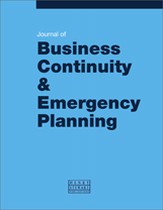Electronic health record downtime responses : One health system’s process for ongoing readiness
Abstract
Since the implementation of the HITECH Act 2009, the integration of the electronic health record (EHR) with other technology platforms has increased the complexity and necessity of technology downtimes, and the continuity of patient care has become increasingly dependent on an intact EHR. To maintain business continuity and safe patient care during planned or unplanned EHR downtime, it is imperative that organisations have solid downtime and disaster recovery plans. Successful downtime planning will include documenting, with annual reviews, the process for patient care during downtime, as well as an exercise programme that touches all aspects of the downtime process. This paper discusses the experience of a healthcare system based in the US Midwest, which has chosen to exercise part of that process on a quarterly basis, prior to scheduled EHR upgrades. Over the past year of exercises, this healthcare system has collected various data elements in order to identify the education needed and the fine-tuning of the exercise design required to ensure staff competency and patient safety during EHR downtime. The paper describes the process, outcome and the steps the organisation is taking to improve the outcomes of future EHR downtimes.
The full article is available to subscribers to the journal.
Author's Biography
Julie Bulson is Director, Business Assurance at Corewell Health, where she plays a key role in the development and implementation of the organisation’s comprehensive system-level healthcare emergency preparedness and response programme. She is also responsible for operational readiness, situation management and business continuity. She is the hospital’s representative on many federal, state and regional healthcare preparedness planning committees. Dr Bulson has lectured on healthcare emergency preparedness at multiple local nursing programmes as well as several healthcare emergency preparedness conferences, and has co-authored multiple articles on healthcare emergency preparedness and response. Her research interests are related to the impact and outcomes of emergency preparedness education for healthcare workers.
Sean Brower is an operational readiness specialist at Corewell Health. He is responsible for writing and implementing policies and procedures for business continuity access (BCA) and oversees downtime hardware readiness across the system. With years of combined experience in operations, IT and healthcare, Sean has a proven track record of delivering practical solutions and ensuring operational excellence. Sean has also worked as an IT specialist and operations manager for several organisations in various industries.
Citation
Bulson, Julie and Brower, Sean (2024, September 1). Electronic health record downtime responses : One health system’s process for ongoing readiness. In the Journal of Business Continuity & Emergency Planning, Volume 18, Issue 1. https://doi.org/10.69554/OXEE1584.Publications LLP
